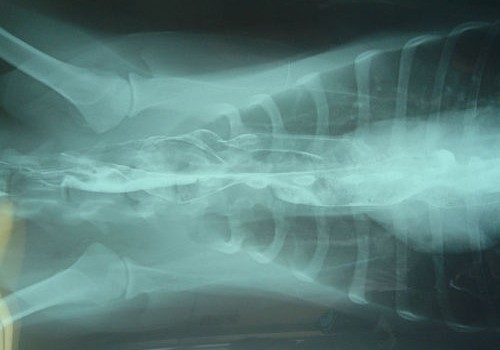
What is lupus?
Lupus is a type of auto immune disease. In the normal course, antibodies produced by the immune system of the body fight against the invading bacteria and viruses and protect the body from infections. However, in auto-immune diseases, the immune system is unable to differentiate between foreign antigens and body’s own tissues. So, it starts acting against the healthy tissues leading to inflammation and swelling. In lupus, one can see this swelling and inflammation resulting in damage to the skin, heart, kidneys, lungs and joints. Almost 80% of the patients suffering from lupus are women. There is no known cure for lupus and the treatment is directed at minimizing the symptoms.

Common Symptoms of Lupus
There are a number of symptoms associated with lupus. Different patients may present with a different set of symptoms which may be temporary or permanent. The severity of the symptoms may also vary from patient to patient. Some of the common symptoms seen in lupus are: • Pain and swelling of the joints. Usually, it is the small joints of the body like those in wrist, hands and feet which are affected, though affliction of elbows and knees is also seen. The joints affected by lupus appear swollen and their mobility gets restricted. • A ‘butterfly rash’ seen on the cheeks and the bridge of the nose. The skin shows increased sensitivity to light and gets sun-burnt easily. • The nails are often discolored. Poor circulation to the nail beds results in irregular nails and puffiness at the base of the nails. • Flare-ups of lupus are often associated with low grade fever. • The patient complains of extreme lethargy and fatigue which may interfere with his daily activities. • Alopecia is seen in many patients of lupus. • Anemia is also a common feature of lupus. • Raynaud’s phenomenon, a condition wherein the fingers turn red or white when...
There are a number of symptoms associated with lupus. Different patients may present with a different set of symptoms which may be temporary or permanent. The severity of the symptoms may also vary from patient to patient. Some of the common symptoms seen in lupus are: • Pain and swelling of the joints. Usually, it is the small joints of the body like those in wrist, hands and feet which are affected, though affliction of elbows and knees is also seen. The joints affected by lupus appear swollen and their mobility gets restricted. • A ‘butterfly rash’ seen on the cheeks and the bridge of the nose. The skin shows increased sensitivity to light and gets sun-burnt easily. • The nails are often discolored. Poor circulation to the nail beds results in irregular nails and puffiness at the base of the nails. • Flare-ups of lupus are often associated with low grade fever. • The patient complains of extreme lethargy and fatigue which may interfere with his daily activities. • Alopecia is seen in many patients of lupus. • Anemia is also a common feature of lupus. • Raynaud’s phenomenon, a condition wherein the fingers turn red or white when exposed to cold, is often seen in lupus. • Clotting problems which may lead to easy bruising.
- Important notification about information and brand names used in this slideshow!
- Photo courtesy of M. Sand, D. Sand, C. Thrandorf, V. Paech, P. Altmeyer, F. G. Bechara by Wikimedia Commons : commons.wikimedia.org/wiki/File:Lupus_pernio_01.jpg
- www.nhs.uk/Conditions/Lupus/Pages/Symptoms.aspx

Raynaud’s phenomenon is one of the classical symptoms of lupus
Inflammation of the blood vessels because of lupus may cause them to go into a spasm, leading to a temporary obstruction in the blood flow. This is commonly seen in the blood vessels supplying the fingers and the toes but may also be seen in the vessels supplying the tip of the nose, ears and tongue. Although it may affect anyone, Raynaud’s phenomenon is especially common in women under 25 years of age. Almost one in five women suffers from this condition. Raynaud’s phenomenon is triggered by sudden exposure to cold and makes the affected part turn white or blue because of the restricted blood flow. Though the condition is temporary, it may cause damage to the tissues when it is occurs frequently.
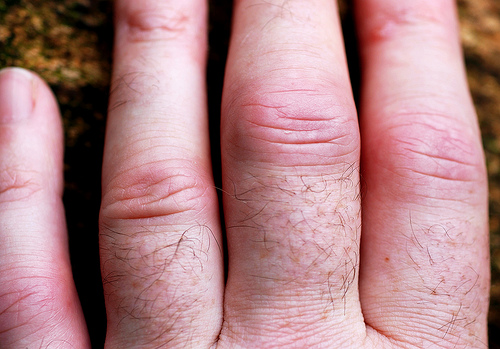
Lupus may mimic rheumatoid arthritis
Both lupus and rheumatoid arthritis are autoimmune diseases with a number of common features. Some of these features include: • Both lupus and RA are more commonly seen in women. • Both the diseases affect multiple organs in the body. • Both the diseases tend to affect the blood vessels. • The immune system is working abnormally in both the conditions leading to damage to body’s own tissues. Because of these common features, lupus is often misdiagnosed as RA, at least in the initial stage of the disease. However, some features which may help in differentiating the two conditions. They are: • Swelling is always present in the involved joint in case of RA. It is rarely present or may be intermittent in case of lupus. • Joint deformities are usually seen in RA.
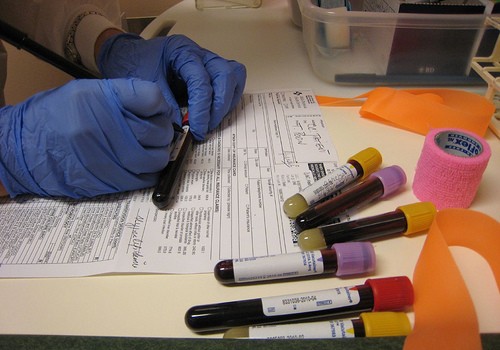
How is lupus diagnosed?
No single test can confirm the diagnosis of lupus. Moreover, the signs and symptoms of the disease keep fluctuating, making lupus difficult to diagnose. However, the American College of Rheumatology (ACR) has enlisted 11 guidelines to facilitate the diagnosis of lupus. The condition can be labeled as lupus if the patient meets at least four of these guidelines at the time of presentation. They are: 1. Inflammation of the membrane covering the lungs or the heart. 2. Small ulcers in the mouth and nose. 3. Arthritis involving two or more peripheral joints. 4. Increased sensitivity to light. 5. Low count of red blood cells, white blood cells and platelets. 6. Increased protein in urine. 7. Positive antinuclear antibody test. 8. Presence of antinuclear antibodies, deoxyribonucleic acid antibodies (anti DNAs), and anti-Smith antibodies. 9. Seizures, psychosis, and other signs of neurological disorder. 10. Butterfly rash on the face. 11. A discoid rash on the skin.

The various forms of lupus
The various forms of lupus include: • Systemic lupus erythematosus (SLE): Severest form of lupus affecting multiple organ systems in the body. The disease is characterized by phases of flaring up followed by phases of remission. • Discoid lupus: This variant of lupus is limited to the skin. It involves the skin of the face, scalp and neck and is characterized by the development of the rash. Around 10% of cases of discoid lupus progress to SLE. • Drug-induced lupus: This type of lupus is a result of body’s reaction to certain medications like hydralazine and procainamide. The condition usually subsides once the offending medicine is stopped. • Neonatal lupus: a neonate develops lupus when a mother suffering from the condition passes on her antibodies to her fetus. The disease is characterized by skin rash and rarely, involvement of organs like the heart and the kidney. It usually subsides on its own by the time the baby is six months old.
- Important notification about information and brand names used in this slideshow!
- Photo courtesy of Linda Bartlett by Wikimedia Commons : commons.wikimedia.org/wiki/File:Monoclonal_antibodies_(8).jpg
- www.medicalnewstoday.com/info/lupus/

Common medications for treating lupus
Although there is no cure for lupus, medicines are used to control the symptoms. Some of the commonly used medicines include: • Non-steroidal anti-inflammatory drugs (NSAIDs): These medicines are usually used for relieving pain, swelling, signs of inflammation and fever associated with lupus. However, strong NSAIDs should be used with caution as they may lead to stomach ulcers and increased risk of heart and kidney diseases. • Corticosteroids: Corticosteroids like prednisolone are the main medicines used during an acute phase of lupus to treat the inflammation. However, long term use of corticosteroids is associated with osteoporosis, weight gain, increased fragility of the blood vessels, hypertension and increased risk of developing diabetes. • Antimalarial drugs: Medicines like hydroxyl-chloroquine, which are used to treat malaria, are also found to be effective in treating the symptoms of lupus. However, they may damage the retina in the long run. • Immune suppressants: These medicines are used to achieve an early remission in lupus. However, these medicines may damage the liver, reduce fertility, and increase the risk of cancer.

How to protect yourself from developing lupus flares
There are a number of ways which a patient can adopt to prevent flaring up of lupus. Some of these steps include: • Taking adequate rest. Patients suffering from lupus complain of persistent tiredness and lethargy. Taking some rest every now and then is helpful in such cases. • Avoid going out in the sun. Exposure to sunlight is a known factor for flaring up of lupus. Avoiding an outing on the sun or using sun protective clothing and sunscreens with a good SPF are a good option to prevent a flare up. • Exercising regularly facilitates early recovery from a flare and prevents the development of a new flare up. • Eating a healthy diet also helps in preventing flaring up of lupus. • Smoking makes the effect of lupus on the heart and the vessels worse. So it is better to give up smoking.

Living with lupus
Although a majority of patients suffering from lupus are able to carry on with their day to day activities, one-third of them have a debilitating problem. Joint pain and fatigue may often be crippling. Such patients may require assistance for their daily chores. Similarly, women with small children may require help during a flare up. Heat therapy may be helpful in providing relief from joint pains. In some patients, shifting to a place where temperature changes are minimal may be beneficial. Psychological therapy may be required in case the patient is suffering from loss in cognitive functions as a result of the disease. Pregnant women suffering from lupus should see their doctor regularly.
- Important notification about information and brand names used in this slideshow!
- Photo courtesy of autumneave by Photobucket : media.photobucket.com/user/autumneave/media/me.jpg.html?filters[term]=lupus%20disease&filters[primary]=images&filters[secondary]=videos&sort=1&o=1
- www.lupusnsw.org.au/lupus/tips-for-living-with-lupus

Effect of lupus on pregnancy
Lupus is associated with increased risk of miscarriage and other problems in the developing fetus. Therefore, experts advise that in women suffering from lupus, the best time to get pregnant is when the disease is in remission. In case, a lupus patient plans to become pregnant, she should meet her doctor at least six months in advance. The doctor would usually advise the patient to stop taking immuno-suppressants and antihypertensive medicines. Corticosteroids are usually continued. Lupus pregnancies are generally considered to be high risk and should be closely monitored by the obstetrician. Frequency of conditions like pre-eclampsia, preterm delivery, intra-uterine growth retardation and sudden miscarriage are high in lupus pregnancies.





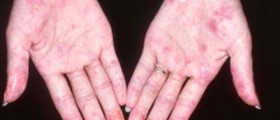

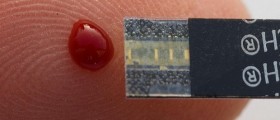

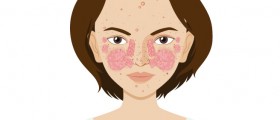





_f_280x120.jpg)




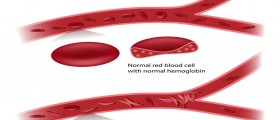






Your thoughts on this
Loading...